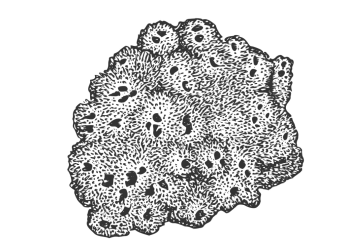
This GIF really shows how life changed from each species, adding new traits to survive and thrive. Unit 9 could really be summarized by the famous picture with the tree of life, it goes narrow to broad. There are 4 man kingdoms: protista, plants, fungi, and animals. Bacteria are in the domain prokarya, they are Earth's first organism. They come in 3 shapes: cocci, bacilli, and spirals. They can be classifed by their cell wall that is gram postitive or negative. Viruses are not really living things, but instead a small infectious particle. Fungi are decomposers and come in 3 groups: sac fungi, club fungi and bread molds. Like animals, plants started in water and evolved through natural selcetion, using the same ideas that we learned in evolution labs. Bryophyta are seedless and non vascular, like moss. Pterophyta are seedless vascular plants and have roots. Gymnosperms bear cones and angiosperms have flowers.

Animals are diverse but still share characteristics. 97% of species are invertebrates. Sponges are the most primitive and have no symmetry. There are 4 main classes: scyphozoans(jellies), anthozoans(coral), hydrozoans(hydra), and cubozoans(box jellies). There are 5 groups of arthopods: trilobites, crustaceans, chelicerates, insects, and myrapods.
All vertebrates have similar characteristics, like notochords, hallow nenechords, paryngeal slits, and a tail. Fish are divided into condricthyes and osteoictheyes. Reptiles are diverse group of amniotes who have dry scales, are ectotherms, and a 3 chamber heart. They are divided into turtles and tortoises, snakes and lizards, crocodilian, and tuatara. The class aves are from therapod dinosaurs, and they have hallow bones, fused wishbone, and "hands" with 4th or 5th finger. In the video we watched in class, "Your Inner Fish", we learned about the discoveries in fetus that led to the fused wishbone and middle ear. The last class mammalia have 4 main cahracteristics, hair, mammary glands, middle ear, and strong jaw. They reproduce by either being a monotreme, marsuprial, or eutherian.
I want to learn more about the bacteria and archea domains because the eukarya has so many species and types but the others still seem like a mystery. I wonder about what types of organisms have not been classified yet or even discovered. There are some documentaries about new discoveries that I have heard of and look very interesting.
I thought that my WEE went well and I am proud of the work that I did. I learned a lot of new facts and big words that were very hard to pronounce. My biggest problem was speaking too fast and calming down when speaking to the class. I was nervous because I was really hoping that I would get my information out without staring at my screen and also not to bore the students. Next time, I will do the same way of knowing my presentation very well but I will teach the class in a more conversational way.
This is a great reflection, Rachel! I love that you included the gif too.
ReplyDelete